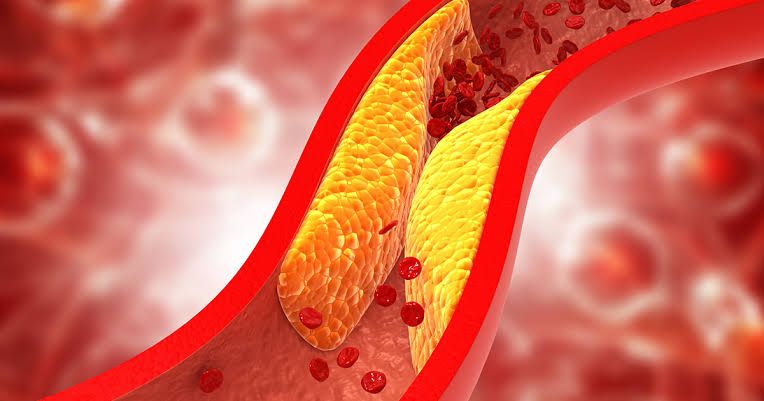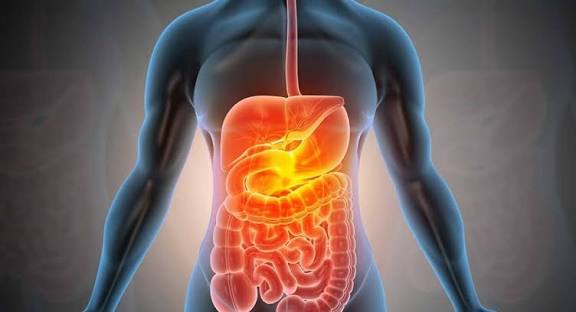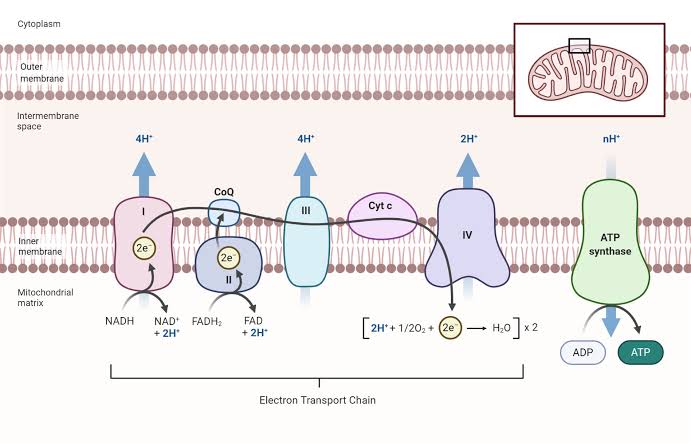
Major Steps in the Biosynthesis of Cholesterol
1. Formation of Acetyl-CoA
- The biosynthesis of cholesterol begins with the formation of acetyl-CoA, which can be derived from various sources, including the oxidation of fatty acids and carbohydrates.
2. Synthesis of HMG-CoA
- Acetyl-CoA is converted to 3-hydroxy-3-methylglutaryl-CoA (HMG-CoA) by the enzyme HMG-CoA synthase. This step is crucial as it marks the beginning of the cholesterol synthesis pathway.
3. Conversion of HMG-CoA to Mevalonate
- The rate-limiting step in cholesterol biosynthesis occurs here, where HMG-CoA is reduced to mevalonate by the enzyme HMG-CoA reductase (HMGR). This step is tightly regulated and serves as a primary control point for cholesterol synthesis. HMGR is inhibited by several factors, including high levels of cholesterol and certain medications known as statins.
4. Phosphorylation and Decarboxylation of Mevalonate
- Mevalonate undergoes a series of phosphorylation reactions followed by decarboxylation to produce isopentenyl pyrophosphate (IPP), an essential building block for cholesterol synthesis.
5. Formation of Squalene
- IPP molecules undergo condensation reactions to form squalene through a series of enzymatic steps involving farnesyl pyrophosphate (FPP) as an intermediate.
6. Conversion of Squalene to Lanosterol
- Squalene is then converted into lanosterol through a cyclization reaction that involves multiple enzymes.
7. Transformation of Lanosterol to Cholesterol
- Finally, lanosterol undergoes a complex series of 19 additional reactions to be transformed into cholesterol. These steps include demethylation and reduction processes that refine the sterol structure into its final form.
Regulatory Sites in Cholesterol Biosynthesis:
- HMG-CoA Reductase (HMGR): This enzyme represents the key regulatory site in cholesterol biosynthesis, where feedback inhibition occurs based on cellular cholesterol levels.
- Sterol Regulatory Element-Binding Protein 2 (SREBP-2): This transcription factor regulates genes involved in cholesterol synthesis and uptake, responding to intracellular cholesterol levels.
Overall, these steps highlight both the biochemical pathway leading to cholesterol production and critical regulatory points that ensure homeostasis within cells.
Pathways of Cholesterol Utilization
Cholesterol is a crucial lipid molecule in the human body, serving various essential functions. It is involved in the formation of cell membranes, synthesis of steroid hormones, and production of bile acids. The pathways of cholesterol utilization can be broadly categorized into several key processes:
1. Cholesterol Biosynthesis Pathway
Cholesterol biosynthesis primarily occurs in the liver and involves multiple enzymatic steps. The pathway begins with acetyl-CoA, which undergoes several transformations to eventually form cholesterol. The key steps include:
- Acetyl-CoA to HMG-CoA: Acetyl-CoA is converted to 3-hydroxy-3-methylglutaryl-CoA (HMG-CoA) by the enzyme HMG-CoA synthase.
- HMG-CoA to Mevalonate: HMG-CoA is then reduced to mevalonate by HMG-CoA reductase, which is the rate-limiting step in cholesterol synthesis and a primary target for statin drugs.
- Mevalonate to Isoprenoids: Mevalonate undergoes phosphorylation and decarboxylation to produce isoprenoid units (isopentenyl pyrophosphate and dimethylallyl pyrophosphate).
- Squalene Formation: These isoprenoid units are condensed to form squalene.
- Cyclization to Lanosterol: Squalene undergoes cyclization to form lanosterol.
- Conversion to Cholesterol: Lanosterol is further modified through a series of reactions involving demethylation and reduction, ultimately yielding cholesterol.
2. Cholesterol Transport Pathways
Once synthesized or ingested from dietary sources, cholesterol must be transported throughout the body. This transport occurs via lipoproteins:
- Low-Density Lipoprotein (LDL): LDL particles transport cholesterol from the liver to peripheral tissues. Cells take up LDL through receptor-mediated endocytosis, allowing them to utilize cholesterol for membrane synthesis or hormone production.
- High-Density Lipoprotein (HDL): HDL plays a critical role in reverse cholesterol transport, where it collects excess cholesterol from peripheral tissues and transports it back to the liver for excretion or recycling.
3. Conversion into Bile Acids
Cholesterol can also be converted into bile acids in the liver, which are essential for fat digestion and absorption:
- Bile Acid Synthesis: Cholesterol undergoes hydroxylation and side-chain cleavage reactions catalyzed by enzymes such as cholesterol 7α-hydroxylase, leading to the formation of primary bile acids (cholic acid and chenodeoxycholic acid).
- Bile Salt Formation: These bile acids can be conjugated with glycine or taurine to form bile salts, which are secreted into the intestine.
4. Steroid Hormone Production
Cholesterol serves as a precursor for steroid hormones synthesized in various endocrine glands:
- Adrenal Cortex: Cholesterol is converted into pregnenolone, which serves as a precursor for glucocorticoids (e.g., cortisol), mineralocorticoids (e.g., aldosterone), and adrenal androgens.
- Gonads: In ovaries and testes, cholesterol is transformed into sex hormones such as progesterone, estrogen, and testosterone.
5. Membrane Structure Functionality
Cholesterol plays an integral role in maintaining cell membrane integrity:
- Fluidity Regulation: It modulates membrane fluidity by fitting between phospholipid molecules within the bilayer.
- Formation of Lipid Rafts: Cholesterol contributes to the formation of lipid rafts—microdomains that organize signaling molecules within membranes.
Potential Secondary Effects of HMG-CoA Reductase Inhibitors
HMG-CoA reductase inhibitors (statins) are widely used medications that lower LDL cholesterol levels by inhibiting the enzyme responsible for its biosynthesis. While effective at reducing cardiovascular risk associated with high cholesterol levels, statins may have secondary effects:
- Muscle-related Symptoms: Statins can cause myopathy or rhabdomyolysis in some patients due to their impact on muscle metabolism.
- Liver Enzyme Elevation: Statins may lead to elevated liver enzymes; thus monitoring liver function tests during therapy is recommended.
- Diabetes Risk Increase: Some studies suggest that statin use may be associated with an increased risk of developing type 2 diabetes mellitus.
- Cognitive Effects: There have been reports linking statin use with cognitive impairment; however, evidence remains inconclusive.
- Drug Interactions: Statins can interact with other medications metabolized by cytochrome P450 enzymes leading to altered drug levels.
In summary, understanding these pathways highlights both the importance of cholesterol in physiological processes and potential implications when utilizing pharmacological interventions like statins.
Importance of Bile Acid Synthesis in Cholesterol Turnover
1. Overview of Bile Acids and Cholesterol Metabolism
Bile acids are amphipathic molecules synthesized from cholesterol in the liver, playing a crucial role in the digestion and absorption of dietary fats and fat-soluble vitamins. They are produced through two primary pathways: the classic pathway and the alternative pathway. The synthesis of bile acids is a significant pathway for hepatic cholesterol catabolism, meaning that it helps to regulate cholesterol levels within the body.
2. Mechanism of Bile Acid Synthesis
The process begins with cholesterol being converted into bile acids through enzymatic reactions involving several key enzymes, such as cholesterol 7α-hydroxylase (CYP7A1), which catalyzes the first step in the classic pathway. This conversion not only reduces cholesterol levels but also generates bile flow, which is essential for the excretion of excess cholesterol from the liver into the intestine.
3. Role in Cholesterol Homeostasis
Bile acid synthesis directly influences cholesterol homeostasis by facilitating several critical processes:
- Cholesterol Excretion: Bile acids promote biliary excretion of free cholesterol, thus preventing its accumulation in the liver and maintaining overall lipid balance.
- Regulation of Lipoprotein Metabolism: Bile acids help modulate lipoprotein metabolism, affecting levels of low-density lipoprotein (LDL) and high-density lipoprotein (HDL) in circulation.
- Feedback Mechanisms: The presence of bile acids in the intestine triggers feedback mechanisms that inhibit further bile acid synthesis when sufficient amounts are present, thereby regulating overall cholesterol turnover.
Recent studies have highlighted that bile acids are not merely digestive agents but also act as signaling molecules that regulate lipid, glucose, and energy metabolism. They activate various nuclear receptors such as peroxisome proliferator-activated receptors (PPARs), which play roles in fatty acid oxidation and glucose homeostasis. This regulatory function underscores their importance beyond digestion; they contribute to metabolic health by influencing insulin sensitivity and reducing risks associated with dyslipidemia and metabolic syndrome.
5. Clinical Implications
Understanding bile acid synthesis’s role in cholesterol turnover has significant clinical implications. For instance, therapies targeting bile acid sequestration can effectively lower plasma glucose levels in type 2 diabetes patients while simultaneously managing dyslipidemia. This dual action highlights how manipulating bile acid pathways can provide therapeutic benefits for conditions related to metabolic disorders.
In summary, bile acid synthesis is vital for maintaining cholesterol turnover, facilitating its excretion from the liver, regulating lipid metabolism, and contributing to broader metabolic health outcomes.
Relationship Between Dietary Cholesterol, Carbohydrate Intake, and Blood Cholesterol Levels
The relationship between dietary cholesterol, carbohydrate intake, and blood cholesterol levels is complex and influenced by various factors, including the type of fats consumed, the glycemic index (GI) of carbohydrates, and individual metabolic responses. Understanding how these components interact can provide insights into managing blood cholesterol levels effectively.
Cholesterol and Its Sources
Cholesterol is a waxy substance essential for various bodily functions, including hormone production and cell membrane integrity. The body produces sufficient cholesterol to meet its needs; therefore, dietary cholesterol is not considered essential. However, dietary sources primarily come from animal products such as meat, dairy, and eggs. While it was once believed that consuming high amounts of dietary cholesterol directly raised blood cholesterol levels, more recent research indicates that saturated fats and trans fats have a more significant impact on elevating low-density lipoprotein (LDL) cholesterol—often referred to as “bad” cholesterol.
Carbohydrates and Their Impact on Lipids
Carbohydrates are categorized based on their structure and how they affect blood sugar levels. Simple carbohydrates (like sugars) can lead to rapid spikes in blood glucose levels, while complex carbohydrates (like whole grains) are digested more slowly. The glycemic index (GI) measures how quickly a carbohydrate-containing food raises blood glucose levels. Foods with a high GI can lead to increased insulin secretion, which may promote fat storage and potentially raise triglyceride levels in the bloodstream.
Interaction Between Cholesterol and Carbohydrate Intake
- Saturated Fat vs. Carbohydrate Intake:
- High intake of saturated fats has been shown to increase LDL cholesterol levels significantly. Conversely, replacing saturated fats with carbohydrates—especially refined or processed carbohydrates—can also negatively affect lipid profiles by lowering high-density lipoprotein (HDL) cholesterol (the “good” cholesterol) while raising triglycerides.
- Glycemic Load (GL):
- Higher glycemic load diets have been associated with unfavorable lipid profiles. Increased GL correlates with higher total cholesterol and LDL levels while inversely affecting HDL levels. This suggests that not only the quantity but also the quality of carbohydrates consumed plays a crucial role in determining lipid outcomes.
- Soluble Fiber:
- Soluble fiber can help lower LDL cholesterol by binding bile acids in the intestine and promoting their excretion from the body. Foods rich in soluble fiber include oats, beans, lentils, fruits like apples and citrus fruits, which can be beneficial when included in a diet that also limits unhealthy fats.
- Overall Dietary Patterns:
- Diets high in refined carbohydrates often lack essential nutrients found in whole foods and may lead to weight gain—a risk factor for elevated blood lipids. A balanced diet focusing on whole grains rather than processed carbs can help maintain healthier lipid profiles.
Conclusion
In summary, both dietary cholesterol and carbohydrate intake influence blood cholesterol levels but through different mechanisms. While saturated fat remains a primary concern for raising LDL cholesterol levels, excessive intake of refined carbohydrates can also adversely affect lipid profiles by lowering HDL cholesterol and increasing triglycerides. Therefore, managing both types of intake—limiting saturated fats while choosing healthier carbohydrate sources—is crucial for maintaining optimal blood lipid levels.







